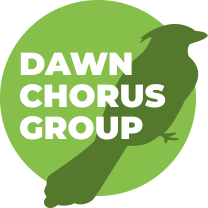Data journalism is transforming how we understand and interact with information in the digital age. The article Patterns in Award Winning Data Storytelling by Adegboyega Ojo and Bahareh Heravi, provides an insightful exploration into this evolving field. This blog aims to unpack the key findings of their study and highlight how these insights can be applied to the nonprofit sector, particularly in diversifying funding.
Understanding Data Journalism
At its core, data journalism involves using data analysis and visualization techniques to tell compelling stories. Ojo and Heravi’s study delves into this concept by analyzing 44 winning entries from the Global Editors Network’s Data Journalism Awards between 2013 and 2016. Their findings not only refine the understanding of data storytelling but also identify crucial technologies and skills needed in the field.
Type of Data Stories
Refuting Claims
One of the striking types of data stories identified in the study is those aimed at refuting claims. In an era where misinformation can spread rapidly, data journalism plays a critical role in debunking myths and false claims. These stories often use robust data analysis to challenge prevailing narratives or incorrect assertions made in the public domain. By presenting factual data in a compelling format, these stories not only correct misinformation but also reinforce the importance of data-driven truth.
Revealing Unintended Consequences
Another critical type of data story involves revealing unintended consequences. In various spheres, such as policy-making, business, and technology, decisions are often made with certain goals in mind. However, the outcomes can sometimes be unexpected. Data journalism shines a light on these outcomes, providing a nuanced view of the impact of decisions and events. These stories are crucial as they can lead to a reassessment of policies, business strategies, or technological implementations.
Enabling a Deeper Understanding of Phenomena
Data stories that enable a deeper understanding of complex phenomena are particularly valuable. These stories use data to unpack complicated issues, making them accessible and understandable to the general public. Whether it’s climate change, economic trends, or social issues, data journalism can provide clarity and insight, enabling readers to grasp the nuances and intricacies of these subjects.
Investigative, Educational, and Advocacy-Oriented Stories
The study also highlights the range of data stories from investigative to educational and advocacy-oriented. Investigative data stories often uncover hidden truths and shed light on issues like corruption, injustice, or inefficiency. Educational stories, on the other hand, focus on informing and enlightening the audience about specific topics or issues, enhancing their understanding and awareness. Advocacy-oriented stories use data to champion causes, influence public opinion, or spur action on social, environmental, or political issues.
Implications for Evaluation Practice and Funding
The study’s implications are significant for evaluation practice in journalism. By understanding the types of stories that resonate with audiences and the technologies behind them, journalists and media houses can tailor their content to be more impactful and engaging.
For those looking to diversify funding, this research provides a roadmap. Understanding the types of data stories and the required technologies helps in crafting compelling proposals that can attract a wide range of funders, from traditional media supporters to tech-oriented investors.
Practical Applications
- Education and Training: Aspiring data journalists and existing professionals need to be trained in the latest data analysis and visualization technologies.
- Innovative Storytelling: Media houses should leverage the insights from this study to create more diverse and engaging data stories, potentially opening new revenue streams.
- Funding Proposals: When seeking funding, highlighting the use of cutting-edge data technologies and the ability to tell varied story types can make proposals more appealing to a broader range of funders.
What’s your capacity for funding strategies?
Join a community of nonprofit leaders dedicated to financial sustainability! Nonprofit Revenue Readiness Meter and contribute to a larger effort to understand and improve nonprofit funding strategies. Your input is invaluable in shaping a future where nonprofits thrive. Let’s collaborate to uncover the best funding solutions for organizations like yours. Start the survey now!

